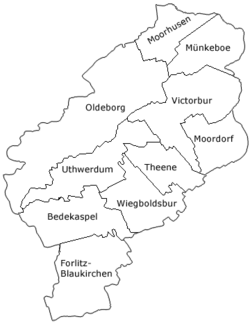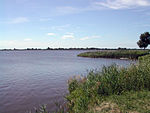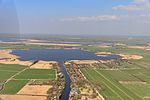Wiegboldsbur
Aurich (district)Towns and villages in East Frisia
The formerly independent village of Wiegboldsbur (East Frisian Frisio-Saxon: Wiebelsbur) in East Frisia in North Germany has been part of the municipality of Südbrookmerland since the regional reform of 1972. Wiegboldsbur is a ribbon development (Reihensiedlung) and lies on the Großes Meer about 10 km northwest of the sea port of Emden. The parish chair is Bernhard Behrends (SPD).
Excerpt from the Wikipedia article Wiegboldsbur (License: CC BY-SA 3.0, Authors).Wiegboldsbur
Forlitzer Straße, Südbrookmerland
Geographical coordinates (GPS) Address Nearby Places Show on map
Geographical coordinates (GPS)
| Latitude | Longitude |
|---|---|
| N 53.454555555556 ° | E 7.3445111111111 ° |
Address
Forlitzer Straße
Forlitzer Straße
26624 Südbrookmerland (Wiegboldsbur)
Lower Saxony, Germany
Open on Google Maps









